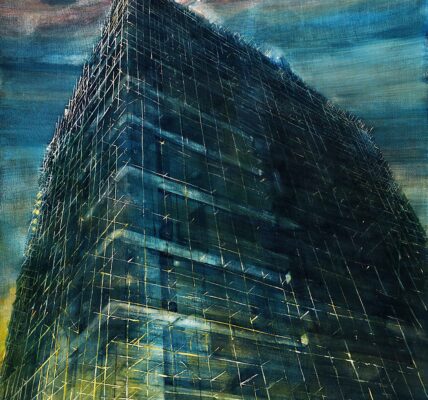Van Gogh to Picasso: the thannhauser Legacy
Guggenheim Museum, Bilbao
Rajesh Punj
Bequeathed by the German industrialist Justin K. Thannhauser (1892 – 1976), the Guggenheim Foundation and Frank Gehry’s monument to Modern and contemporary art in Bilbao, join hands to celebrate an incredible collection of paintings, donated by an individual committed to the cause of Modernism, at a time when the legacy of 19th century art appeared much more favourable. Thannhauser likely suffered disapproval and possible derision for his adoration of avant-garde artists of the late 19th and early 20th century; Paul Cézanne (1839 – 1906),Edgar Degas (1834 – 1917), Édouard Manet (1832 – 1883), Pablo Picasso (1881 – 1973) and Vincent Van Gogh (1853 – 1890) among them. Not only admiring these mavericks, who for the majority endured very isolated lives in pursuit of their painterly ambitions, Thannhasuer wanted to befriend them, to enter into their lives, in order he might be the first to see the works, not rewarded to a wider audience. And it was such favouritism that had him consider how he might well patronise their art to audiences suffering the strength of academic painting.

The Guggenheim Bilbao exhibition, under the stewardship of American curator Megan Fontanella, is nothing short of remarkable, as it takes part of Justin Thannhauer’s collection from its home at the Solomon R. Guggenheim Museum, New York, to it’s partner institution in Bilbao. Exhibited for the first time outside of New York, the Modernist works explore a prolonged moment of history when art and politics were intertwined, with the emergence of something new. Of an aesthetic that was entirely emotive. Championing Munich Modernism and French avantgardism, with these paintings of coloured landscapes, fruit and figures; it was as if artists under the influence of avant-gardism had decided to surrender to their own emotions. Encouraged as they were by Romanticism’s aspiration for the individual, painting as Van Gogh, (Paul) Gauguin (1848 – 1903) and Cézanne saw it, was an opportunity to inhale everything of their surroundings in order to create works that applied as much of the artist to the work, as they did embrace the contoured and intensely coloured scene at hand. Which was something that Thannhauser saw as primary to the prevailing styles of the time, when Europe at the end of the 19th and into the 20th century, was enjoying so many forms of cultural inventiveness; a moment when art was to become entirely autonomous of its past.
The son of German Jewish art dealer Heinrick Thannhauser, Justin was to first discover the delights and divisions of art at his father’s gallery in Munich. Founded in 1909, Modern Galerie was intended to deliver new art to its audiences. Becoming synonymous with the avant-gardism of the age, the gallery introduced so much of the Modern art that was to become central to his collection. When Thannhauser clearly saw in Van Gogh, Picasso, Degas and (Wassily) Kandinsky the signs of something entirely different. A vision of the world that was subject to the tragedies and torment of the artist’s own hand. As explained by Fontanella, of Thannhauser being the first to show Gauguin, Van Gogh and Picasso in Munich, when audiences were still unsure of what to make of this racier version of reality. Further galleries followed for Thannhauser in Lucerne and Berlin, as a mark of his greater ambitions, before the emergence of the National Socialists in the 1930’s, that as a movement considered such art ‘degenerate’, and wanted Modernist thinkers; musicians, artist, academics and architects alike, disbarred, and in certain cases dead. 
More remarkably lesser known, his Roadway with Underpass (Le Viaduc) 1887, that as an oil on cardboard illustrates Van Gogh’s limited resources at the time, and also of his perseverance to paint, in spite of everything that was to follow.
Interspersed, and appearing as wallpaper, are scenes of audiences of the age attending one of Thannhauser’s shows, together with installation shows as black and while photographs, of some of those original exhibitions; in which works are slightly more haphazardly pinned to the wall like furnishings. As he himself is pictured positively triumphant.
Read More>> Please Subscribe our Physical Magazine
